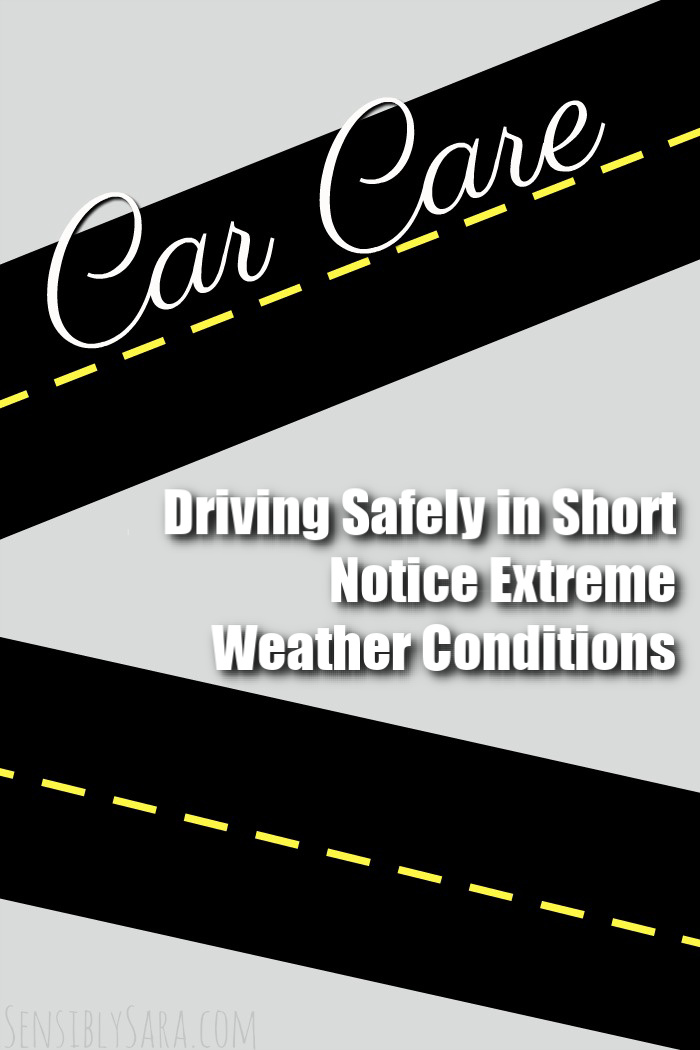**Full Disclosure: This is a sponsored post which also contains affiliate links. If you make a purchase, I get a teeny-tiny percentage at no cost to you. All opinions are my own.
When dangerous weather conditions arise, such as hurricanes and tornadoes, meteorologists will issue warnings for drivers to stay off the road. However, there are times when Mother Nature takes people by surprise, giving meteorologists short notice to warn drivers.
EARTHQUAKE
Overview – Although a number of states can experience earthquakes, Alaska and California are the two states that are more prone than others.
What to do – Maintain control of your vehicle, especially your steering wheel. A lot of drivers seem to get car sick, disoriented and/or dizzy during an earthquake. As soon as possible, do pull over and park your vehicle in a parking lot or other open area.
What not to do – Don’t get out of your vehicle for at least an hour after the ground stops shaking because it is likely that aftershocks will occur.
HURRICANE
Overview – Hurricanes form in both the Atlantic and Pacific Oceans, with the most vulnerable areas being the Atlantic Coast, the Gulf of Mexico and the Hawaiian Islands. Hurricane seasons runs from June 1st to November 30th, peaking in August and September.
What to do – If you come to an intersection and the traffic lights are not working, act as though the intersection is a four-way stop. Drive a safe speed for the road and vehicle conditions. Keep a safe distance between your car and the car in front of you.
What not to do – Don’t drive through water, especially rapidly moving water. As little as 6 inches of water can cause you to lose control of your car, while 2 feet of water can whisk your car away. Don’t drive over downed power lines. Live power lines can result in electrical shock injury and electrocution.
TORNADO
Overview – Tornadoes have formed in all 50 states at one time or another. However, there are 2 areas that are more prone to tornadoes: the South Central Plains, known as Tornado Alley and along the Gulf Coast, known as Dixie Alley.
What to do – In order to get out of the path of a tornado, take the closest exit that is perpendicular to the tornado. The idea here is to put as much distance as possible between your vehicle and the tornado. If you happen to get caught in a tornado’s path, protect yourself from flying debris by pulling your vehicle off the road. Keep the engine running so you’ll have the protection of the airbags, if necessary. Also, keep your seat belt on and lower your head below the line of the windows, putting your hands over your head for protection.
What not to do – Don’t park under a bridge or overpass because when the wind from the tornado passes underneath, the wind can actually pick up strength. Don’t chase a tornado. While reality shows, like Storm Chasers, make the whole process look safe and even a little fun, it’s incredibly dangerous.
Head over to Lustine Toyota to find a car that fits your needs!

Leave a Reply